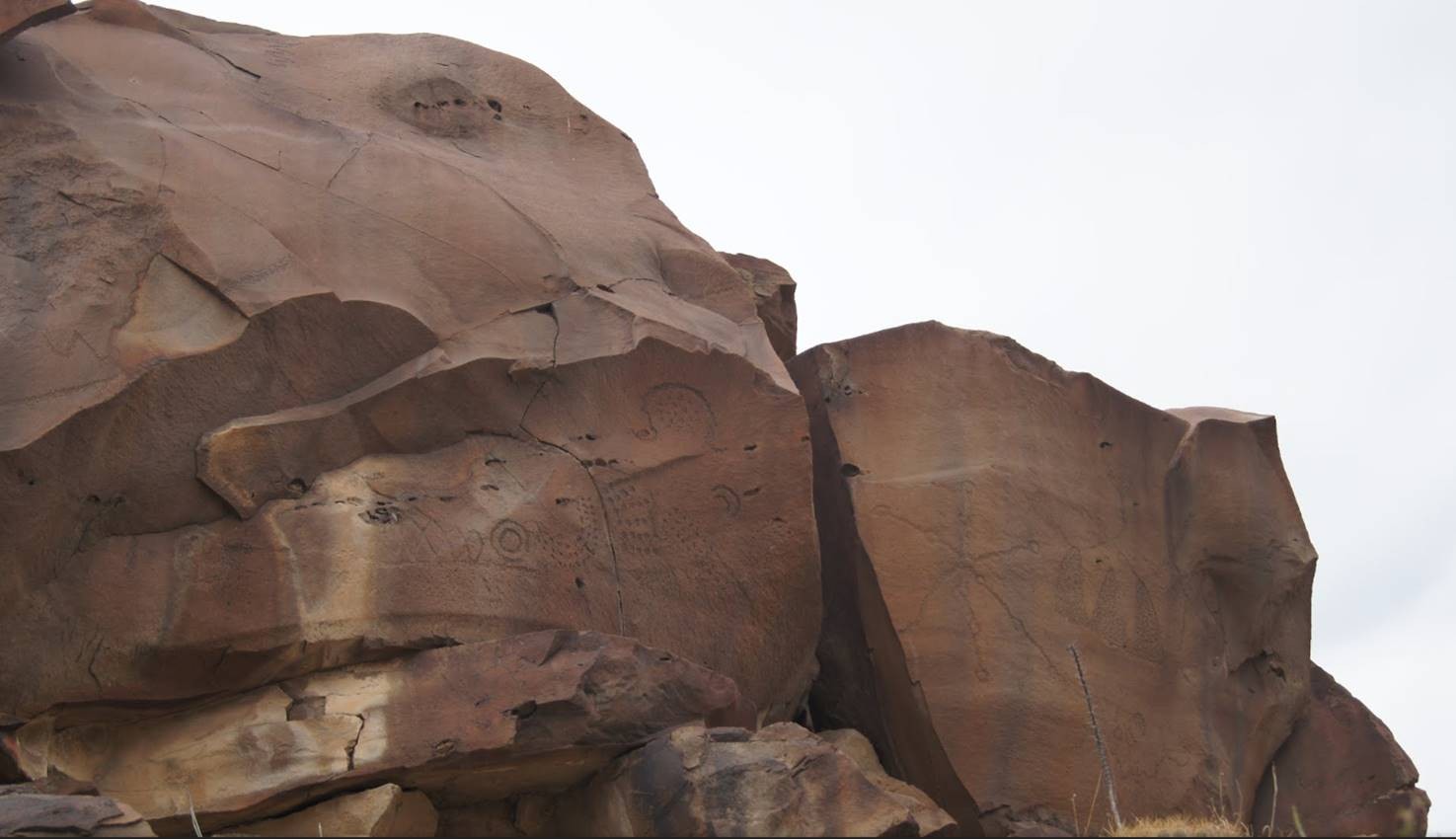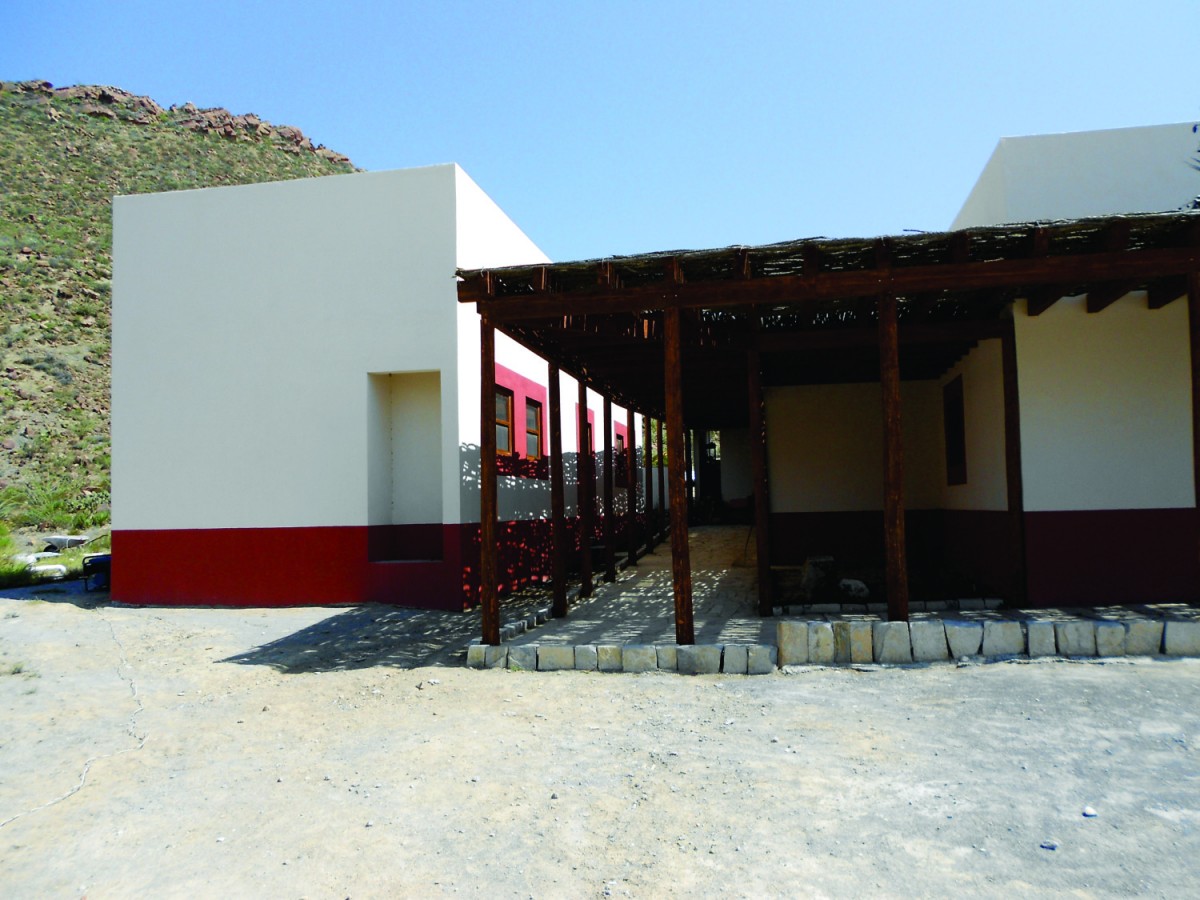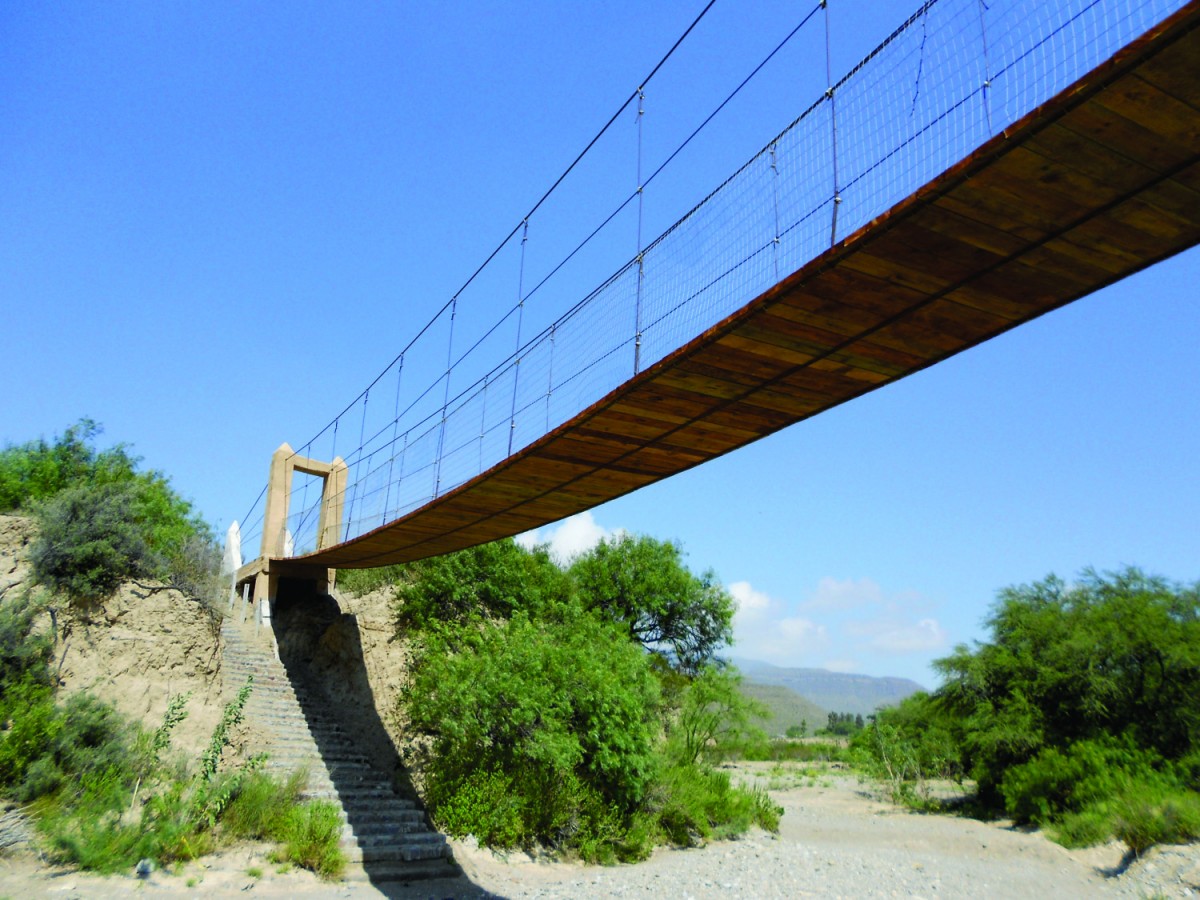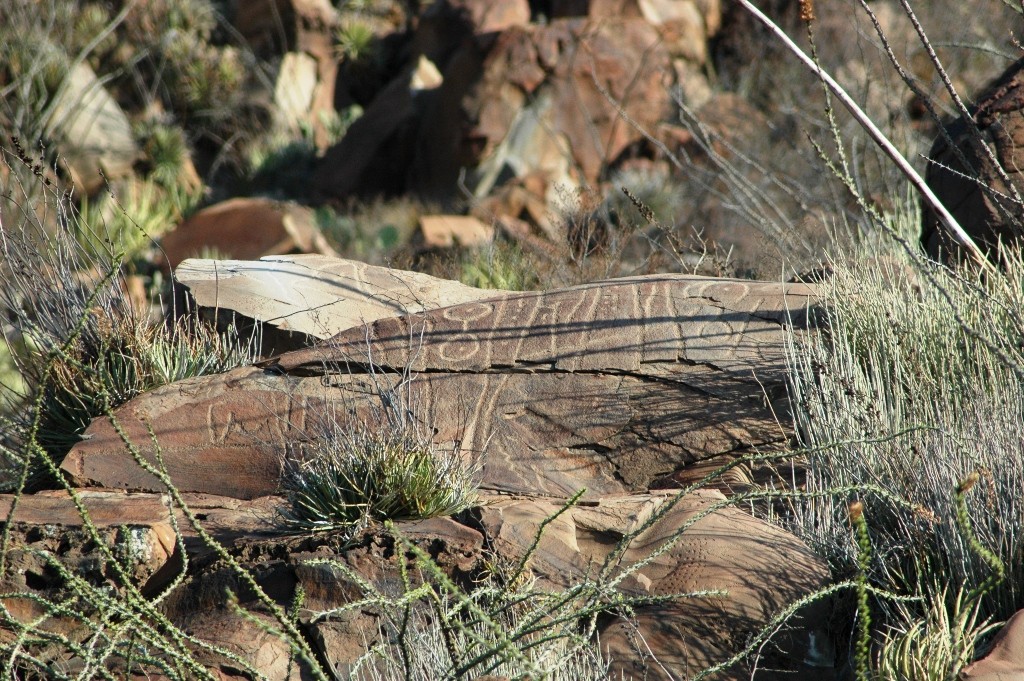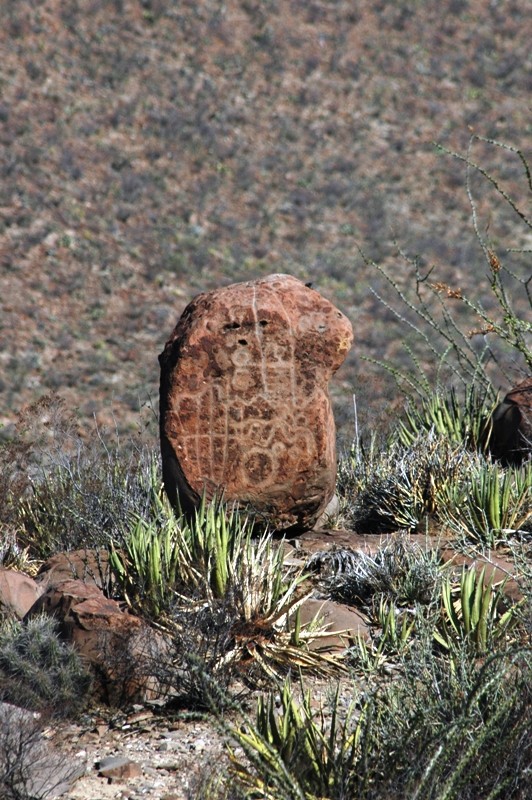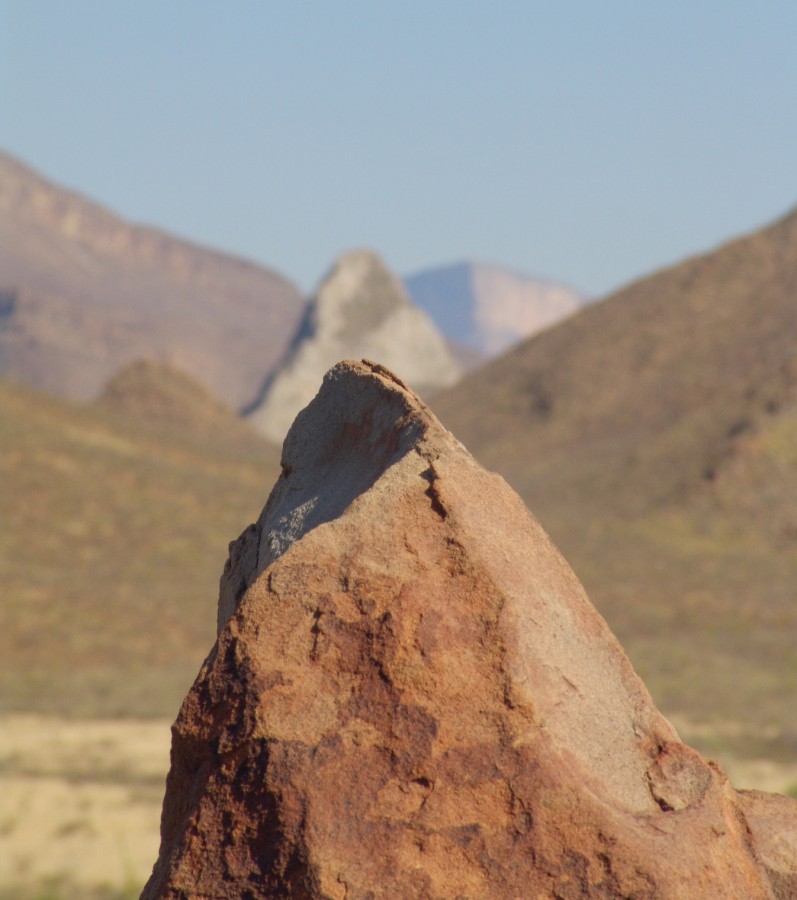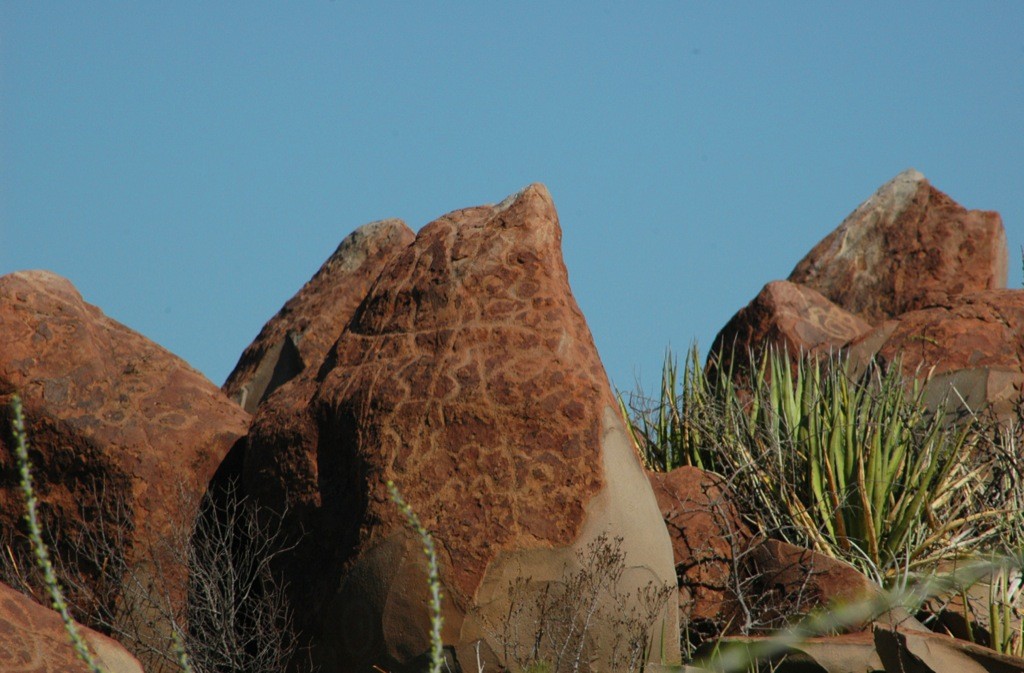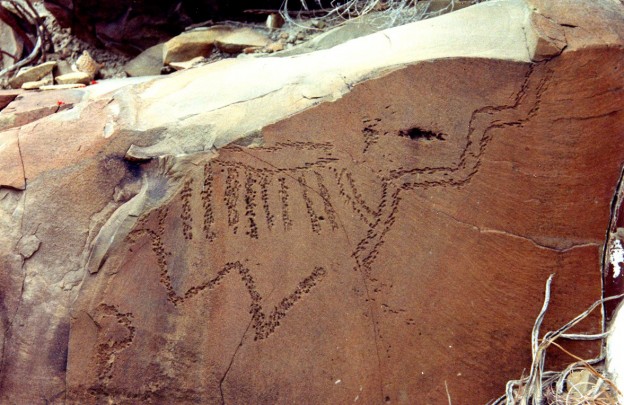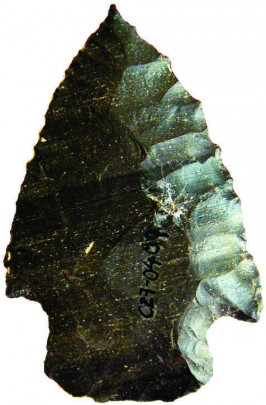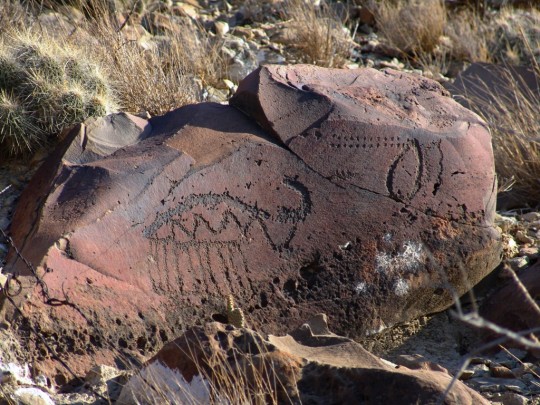Boca de Potrerillos
Gets its name because at the end of the viceregal period a wine estate was established here called Boca de Potrerillos.
Thousands of carved rocks have been found here with prehistoric drawings of groups of hunter-gatherers who used to inhabit the area. The images refer to the worship of nature and meteorological phenomena, among other themes.
About the site
INAH opened the doors to this site in 1995; the first rock art site open to the public in Mexico and the most important archeological site of the northeast of the country.
The mystery of this part of the state of Nuevo León, 50 miles from the city of Monterrey, began to unfold in 1989. That was when the archeologist Moisés Valadez and his team began their archeological and paleoenvironmental research. They revealed that the ancient dwellers of Boca de Potrerillos never saw the need to cultivate the land because they lived with an abundance of animals and plants, which meant they could live from hunting and gathering, including fishing the lakes and rivers. Also, radiocarbon dating has shown that the place was inhabited for more than 8,000 years and that it was inhabited seasonally until its disappearance in the mid-eighteenth century.
The site’s main attraction is without a doubt the discoveries on the sides of the La Zorra and El Antrisco hills, where the indigenous carved their art on more than 4,000 rocks. Of these, Valadez and his colleagues have recorded and studied in detail more than 17,000 rock images which reflect a complex perspective of the natural environment and a cultural landscape very different to that predominating in the pre-Hispanic societies found in the rest of the country.
One of the first things visitors want to know is what the rock carvings mean. In reality the symbols are strange and complicated because of their great antiquity. It would appear that the rock carvings were made in a planned way with a ceremonial function in mind.
To make the symbols carved in rock more understandable, the archeologists invented a three-dimensional recording system with a very specific methodology, based on the position and orientation of each rock. The system consists of an installation of a portable grid upon that forms cubes measuring one meter on each side, which can expand in any direction, including on the vertical axis. The three-dimensional grid is oriented towards magnetic north, and then photographs are taken of each of the horizontal and vertical faces. The information gathered from the series of photographs and descriptions of the rock carvings is noted on data catalog sheets. Drawings are then prepared based on the photographs, as well as location maps of every rock and groups of similar rock carvings, so that spatial distributions can also be understood.
As well as being a very valuable tool for studying the rock art of the region, the three-dimensional grid system has been useful in the conservation and safeguarding of these valuable archeological remains. Knowing the exact location and condition of every rock makes it possible to tell if there is a rock carving missing or whether one has been defaced or damaged.
It has also been possible to collect 3,000 pieces of worked rock, bone and shell on the the river floodplain at the foot of the mountains mentioned previously. A detailed study of their forms has revealed their use as weapons, tools, utensils and as adornments. The scraping and cutting tools stand out. These are rough pieces which were used for jobs such as cutting hides, smoothing wood and carving vegetable fibers. The 7,000-year-old dart tips are also famous. Their production ceased close to 1,000 years ago. After that date much smaller arrowheads were made, and these continued to be used until the eighteenth century.
In terms of the principal tools, it is worth mentioning the milling and grinding stones, mortars and receptacles which were used to grind seeds, husks and plants used in the indigenous diet. The finds also include knives, axes, hammers, burins, awls and drills, together with objects with special uses such as earrings, beads, necklaces and small plaques with incised geometric designs and figures similar to the rock carvings. Finally the range also includes a few pottery, metal and glass objects.
Over the years a visiting strategy has been devised that is in harmony with the cultural remains. For this reason the facilities include access terraces, protective netting, outdoor and indoor signage, an exhibition gallery, conference room, walkways, a suspension bridge and garden areas with native plants.
The mystery of this part of the state of Nuevo León, 50 miles from the city of Monterrey, began to unfold in 1989. That was when the archeologist Moisés Valadez and his team began their archeological and paleoenvironmental research. They revealed that the ancient dwellers of Boca de Potrerillos never saw the need to cultivate the land because they lived with an abundance of animals and plants, which meant they could live from hunting and gathering, including fishing the lakes and rivers. Also, radiocarbon dating has shown that the place was inhabited for more than 8,000 years and that it was inhabited seasonally until its disappearance in the mid-eighteenth century.
The site’s main attraction is without a doubt the discoveries on the sides of the La Zorra and El Antrisco hills, where the indigenous carved their art on more than 4,000 rocks. Of these, Valadez and his colleagues have recorded and studied in detail more than 17,000 rock images which reflect a complex perspective of the natural environment and a cultural landscape very different to that predominating in the pre-Hispanic societies found in the rest of the country.
One of the first things visitors want to know is what the rock carvings mean. In reality the symbols are strange and complicated because of their great antiquity. It would appear that the rock carvings were made in a planned way with a ceremonial function in mind.
To make the symbols carved in rock more understandable, the archeologists invented a three-dimensional recording system with a very specific methodology, based on the position and orientation of each rock. The system consists of an installation of a portable grid upon that forms cubes measuring one meter on each side, which can expand in any direction, including on the vertical axis. The three-dimensional grid is oriented towards magnetic north, and then photographs are taken of each of the horizontal and vertical faces. The information gathered from the series of photographs and descriptions of the rock carvings is noted on data catalog sheets. Drawings are then prepared based on the photographs, as well as location maps of every rock and groups of similar rock carvings, so that spatial distributions can also be understood.
As well as being a very valuable tool for studying the rock art of the region, the three-dimensional grid system has been useful in the conservation and safeguarding of these valuable archeological remains. Knowing the exact location and condition of every rock makes it possible to tell if there is a rock carving missing or whether one has been defaced or damaged.
It has also been possible to collect 3,000 pieces of worked rock, bone and shell on the the river floodplain at the foot of the mountains mentioned previously. A detailed study of their forms has revealed their use as weapons, tools, utensils and as adornments. The scraping and cutting tools stand out. These are rough pieces which were used for jobs such as cutting hides, smoothing wood and carving vegetable fibers. The 7,000-year-old dart tips are also famous. Their production ceased close to 1,000 years ago. After that date much smaller arrowheads were made, and these continued to be used until the eighteenth century.
In terms of the principal tools, it is worth mentioning the milling and grinding stones, mortars and receptacles which were used to grind seeds, husks and plants used in the indigenous diet. The finds also include knives, axes, hammers, burins, awls and drills, together with objects with special uses such as earrings, beads, necklaces and small plaques with incised geometric designs and figures similar to the rock carvings. Finally the range also includes a few pottery, metal and glass objects.
Over the years a visiting strategy has been devised that is in harmony with the cultural remains. For this reason the facilities include access terraces, protective netting, outdoor and indoor signage, an exhibition gallery, conference room, walkways, a suspension bridge and garden areas with native plants.
Did you know...
- “Boca,” or mouth, is the name that was given to the gap between two ranges of hills at the entrance to the Potrerillos Canyon. The site was named Boca de Potrerillos in the colonial period.
- Boca de Potrerillos was recognized as an zone of archeological monuments by presidential decree in 2001, an honor not accorded to any other World Heritage rock art site in Mexico.
An expert point of view

Moisés Valadez Moreno
Centro INAH Nuevo León
Practical information
Tuesday to Sunday from 10:00 to 17:00 hrs.
$75.00 pesos
Se localiza en el Municipio de Mina, estado de Nuevo León, en el km 45.9 de la carretera Monterrey - Monclova a unos 80 km de la ciudad de Monterrey
Starting from the city of Monterrey, take highway 53 Monterrey - Monclova, Coahuila, crossing the municipalities of El Carmen, Abasolo, Hidalgo and Mina. When you reach km 45.9, turn left, continuing on a dirt road for 3.5 km following the signs that lead to the parking lot of the Boca de Potrerillos Archeological Monuments Zone.
Services
-
+52 (818) 333 97 51
-
This email address is being protected from spambots. You need JavaScript enabled to view it.
Directory
Encargada de la Zona de Monumentos Arqueológicos
Paola Isabel Zepeda Quintero
This email address is being protected from spambots. You need JavaScript enabled to view it.
+52 (818) 333 97 51

